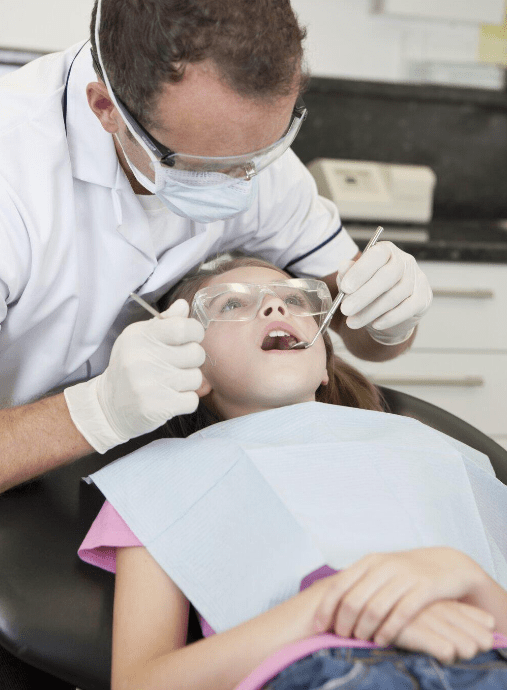Maintaining good oral health is crucial for overall well-being, yet many people experience dental issues at some point in their lives. From tooth decay to gum disease, these problems can cause discomfort and impact daily activities.

Understanding the most common dental issues and their treatments can help you take better care of your teeth and gums. In this article, we cover 8 of the most prevalent dental problems and provide practical solutions to address them effectively.
1. Tooth Decay
Tooth decay, or cavities, is one of the most common dental issues. It occurs when plaque, a sticky film of bacteria, builds up on teeth and produces acids that erode the enamel.
If left untreated, tooth decay can lead to deeper damage, including infections and tooth loss. Regular brushing, flossing, and dental check-ups are essential to prevent tooth decay and maintain overall oral health.
Treatment:
- Fillings: The decayed portion of the tooth is removed and filled with materials such as composite resin, amalgam, or gold.
- Fluoride Treatments: Professional fluoride treatments can help restore enamel and prevent further decay.
- Prevention: Regular brushing, flossing, and reducing sugar intake can help prevent tooth decay.
2. Gum Disease
Gum disease, or periodontal disease, ranges from mild inflammation (gingivitis) to serious gum infection (periodontitis) that can damage the soft tissue and bone supporting the teeth.
Treatment:
- Scaling and Root Planing: Deep cleaning to remove plaque and tartar from below the gumline.
- Antibiotics: Medications can help control bacterial infection.
- Surgery: In severe cases, surgical procedures like flap surgery or bone grafts may be necessary.
- Prevention: Good oral hygiene and regular dental check-ups can prevent gum disease.
3. Missing Teeth and Dental Implants
Missing teeth can affect eating, speaking, and the appearance of your smile. Dental implants are a popular and effective solution for replacing missing teeth.
Treatment:
- Dental Implants: Artificial tooth roots made of titanium are surgically implanted into the jawbone. They provide a stable base for attaching replacement teeth.
- Best Candidates: Individuals with healthy gums and adequate bone density are ideal candidates for implants. Consulting with a dental professional like Dr. Rady Rahban, who specializes in the best techniques, can ensure optimal results.
- Other options: Bridges and dentures are alternative treatments for replacing missing teeth.
4. Tooth Sensitivity
Tooth sensitivity involves discomfort or pain in teeth when exposed to certain substances and temperatures. This sensitivity often occurs in response to hot, cold, acidic, or sweet foods and drinks, which can trigger sharp or aching sensations. The underlying cause of tooth sensitivity may include enamel erosion, gum recession, or exposed tooth roots.
Treatment:
Desensitizing Toothpaste: Special toothpaste can help reduce sensitivity over time.
Fluoride Gel: Applied by a dentist to strengthen tooth enamel and reduce sensitivity.
Dental Procedures: Treatments such as bonding or sealants may be used to cover exposed root surfaces.
If you feel worried about having dental work done you can look into sedation dentistry for anxiety. That is a good way to have your work done knowing you won’t have to experience it as it happens.
5. Tooth Erosion
Tooth erosion is the loss of tooth structure due to acid attacking the enamel. It can be caused by dietary acids, stomach acid (due to conditions like acid reflux), or medications.
Treatment:
- Bonding: Application of tooth-colored resin to the affected areas.
- Crowns: Caps placed over the teeth to restore their shape and function. Chedck My DDS Supply to learn more.
- Prevention: Reducing acidic food and drink intake, and using a straw to minimize contact with teeth.
6. Toothaches
Toothaches can result from a variety of dental problems, including cavities, gum disease, and tooth infections. These issues can cause pain ranging from mild discomfort to severe, throbbing sensations that impact daily life.
Treatment:
- Dental Examination: Identifying the cause of the toothache is essential.
- Fillings or Root Canals: Depending on the cause, the dentist may need to fill cavities or perform a root canal to remove infected tissue.
- Pain Relief: Over-the-counter pain relievers and antibiotics may be prescribed.
7. Bad Breath (Halitosis)
Bad breath can be caused by poor oral hygiene, certain foods, or underlying dental issues. Accumulated food particles and bacteria in the mouth can lead to unpleasant odors, especially if you skip brushing and flossing regularly.
Treatment:
- Good Oral Hygiene: Regular brushing, flossing, and tongue cleaning.
- Mouth Rinses: Antimicrobial mouthwashes can reduce bacteria.
- Dental Check-Up: Addressing underlying issues such as gum disease or cavities.
8. Misaligned Teeth
Misaligned teeth can affect both the appearance and function of your smile. Issues such as crooked teeth, gaps, or bite problems can lead to discomfort and difficulty in maintaining oral hygiene.
Treatment:
- Braces: Traditional metal braces or clear aligners can help straighten teeth and correct bite issues.
- Retainers: After braces, retainers are used to maintain the teeth’s new positions.
- Orthodontic Consultation: An orthodontist can assess the alignment issues and recommend the most appropriate treatment to achieve a well-aligned and functional smile.
Conclusion
Addressing dental issues promptly and effectively is key to preserving your oral health and avoiding more serious problems down the line. By staying informed about common dental problems and their treatments, you can take proactive steps to maintain a healthy and beautiful smile.
Regular dental check-ups, good oral hygiene practices, and timely intervention are essential in preventing and managing dental issues. Remember, a healthy smile contributes to overall well-being and boosts confidence.



